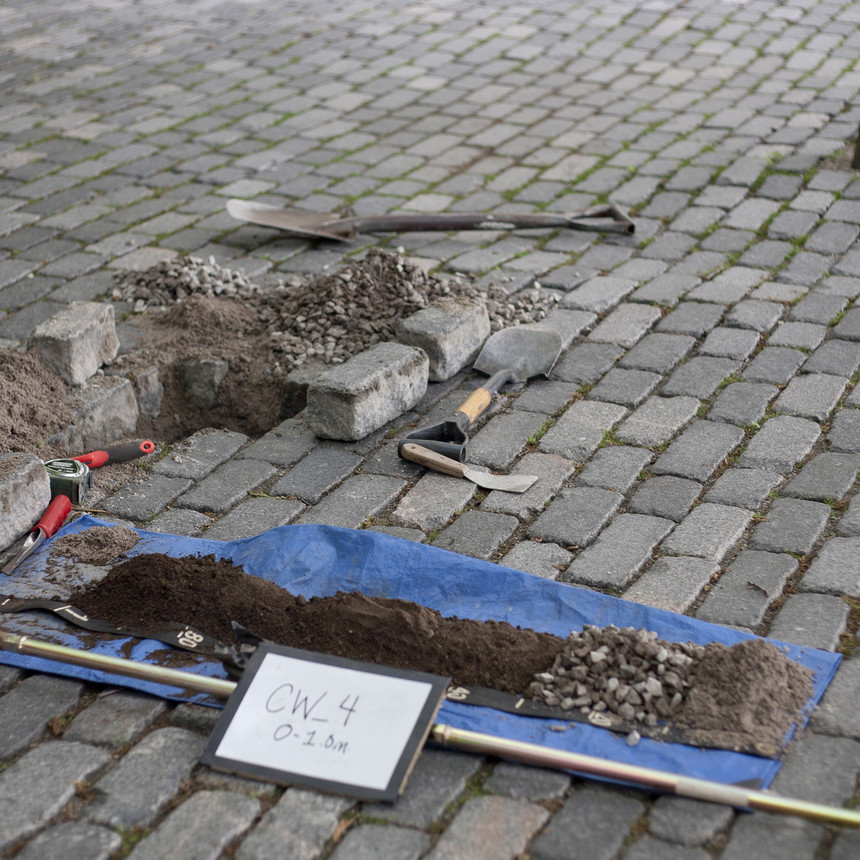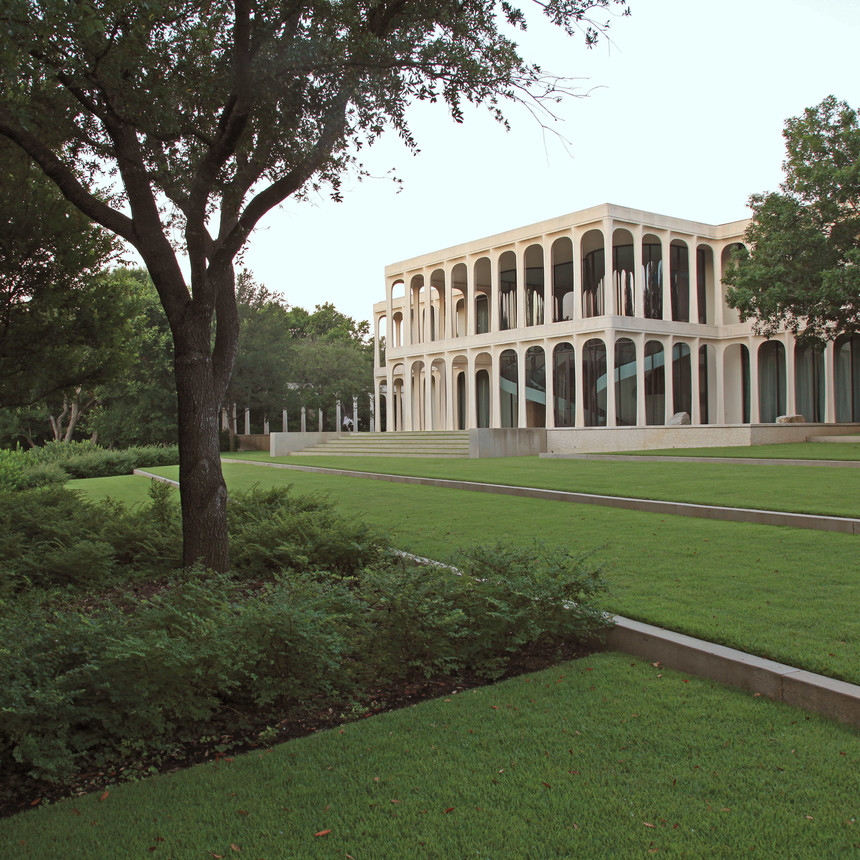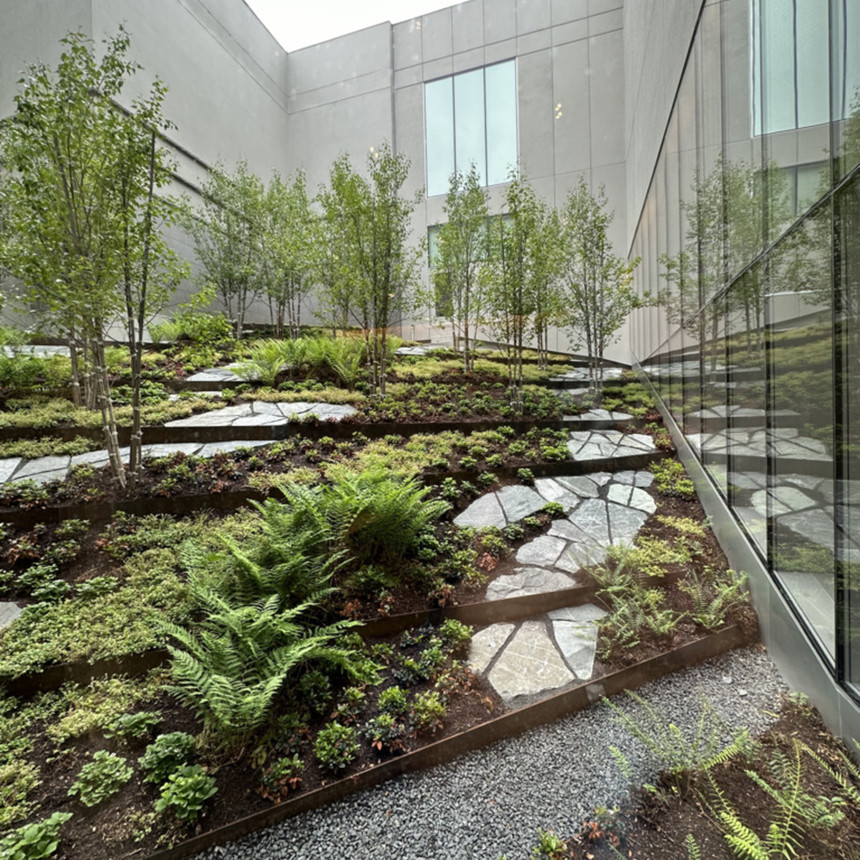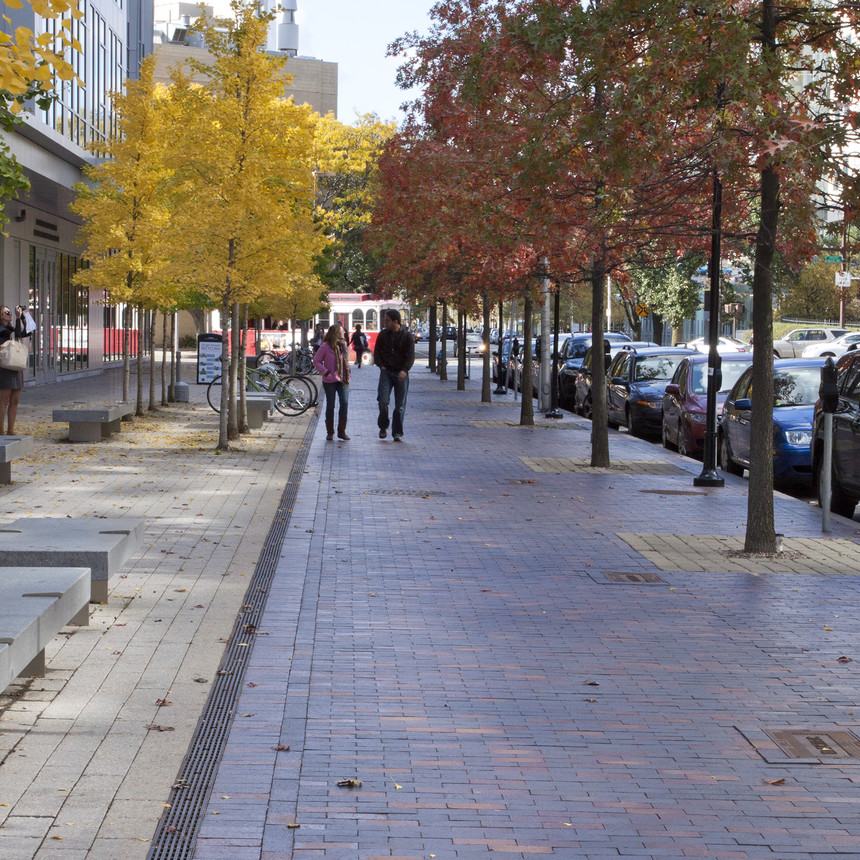Roaring Brook
From fragments of a vernacular New England landscape, we created a coherent and lively place for culinary production, water management, ecological stewardship, and enduring memorial.
Roaring Brook runs down lush, graceful hills of glacial hardpan toward the Connecticut River. At the base of one such a hill, a nineteenth-century entrepreneur partially channeled the Brook to power his sawmill, establishing a sluiceway, spillway, and reservoir. The site’s significance, in terms of its history as well as its ecology, derives from this engineered relationship to water. The owners asked that the project meet the family needs yet require as little maintenance as possible.
We introduced a system of circulation that foregrounded the beauty of the glacial forms and prioritized infiltration as a means of water management. New terraces step down from the farmhouse, creating usable space where only a precipitous slope had been. Instead of coming right up to the front porch, the new drive runs almost parallel to the edge of the floodplain.
A matrix of sedges and ferns blankets the embankments on either side of the drive, and multi-stem red maples create a sheltering boundary between the parking terrace and the floodplain meadow. American sycamore and flowering dogwood dot the floodplain, and the swales and southern sluiceway are full with clethra, joe-pye weed, and sensitive fern. Selective editing along Roaring Brook has caused the population of cardinal flower to take off. There are weeks when the red flowers draw the view along the full run of the stream. Now the arrival sequence leads you along the stream and foregrounds the forms and species adapted to the hydric soils of the floodplain.
Location
East Haddam, Connecticut
Dates
2010-2018
Size
42 acres





